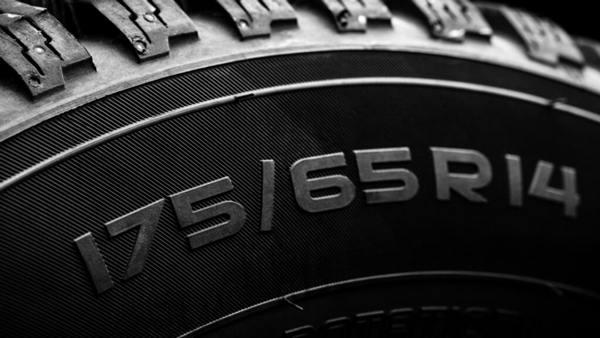Just In
- 6 min ago
 Royal Enfield Himalayan 450 – Here's Everything We Know So Far
Royal Enfield Himalayan 450 – Here's Everything We Know So Far - 1 hr ago
 Hero MotoCorp To Increase Prices From July 3 - Xtreme, Splendor, Xoom Will Get Pricier
Hero MotoCorp To Increase Prices From July 3 - Xtreme, Splendor, Xoom Will Get Pricier - 2 hrs ago
 Lexus RX350h Deliveries Commence In India – Automaker Claims Positive Response
Lexus RX350h Deliveries Commence In India – Automaker Claims Positive Response - 16 hrs ago
 Royal Enfield Himalayan 450 & CS Santosh Go Dirty Dancing At Big Rock: Video
Royal Enfield Himalayan 450 & CS Santosh Go Dirty Dancing At Big Rock: Video
Don't Miss!
- Sports
 Why New Zealand Women off-spinner Eden Carson bowled 11 overs in an ODI match vs Sri Lanka?
Why New Zealand Women off-spinner Eden Carson bowled 11 overs in an ODI match vs Sri Lanka? - Lifestyle
 When Is Guru Purnima 2023? Date, Time, History, Significance And Celebrations
When Is Guru Purnima 2023? Date, Time, History, Significance And Celebrations - News
 Did Sleep Hypnosis Kill 26 On Maharashtra Expressway?
Did Sleep Hypnosis Kill 26 On Maharashtra Expressway? - Movies
 Bigg Boss OTT 2: Manisha Rani's Sister Slams Bebika Dhurve For Mocking: 'Proud' Of Her Government School Roots
Bigg Boss OTT 2: Manisha Rani's Sister Slams Bebika Dhurve For Mocking: 'Proud' Of Her Government School Roots - Finance
 7 Stocks Set To Go Ex-Bonus In The Month Of July
7 Stocks Set To Go Ex-Bonus In The Month Of July - Technology
 Samsung Launches Game Portal: A One-Stop Online Store for Gamers
Samsung Launches Game Portal: A One-Stop Online Store for Gamers - Travel
 Origin Of Tomatoes and Its Journey From the Andes to India's Tomato Belt
Origin Of Tomatoes and Its Journey From the Andes to India's Tomato Belt - Education
 HSCAP Kerala 3rd Allotment is OUT; How to Check
HSCAP Kerala 3rd Allotment is OUT; How to Check
A Tyre Marking Guide - Understand Your Rubber Better
What are tyre markings? If we look at tyres closely, letters and numbers are visible - similar to a Mathematics formula, but surprise surprise, it's not really that! So, what do these sets of letters and numbers mean? Go no further, we have the answer right here.
On a tyre, if you've seen something similar to 'P150/60-R17 66W' or at least numbers and letters in the same format, that is what a tyre marking, or rather, the size marking is. But, what do these mean individually? In simple terms, it's the tyre usage, width, aspect ratio, tyre construct, height, load index, and speed rating.
Let's start off with the 'P' tyre marking. The letter 'P' is there not just for show, but because the tyre is used for a passenger vehicle. The 'P' simply stands for Passenger vehicle, whereas if 'LT' is seen, it would mean Light Truck.
After 'P', we have '150'. Here, '150' is the width from one sidewall to the other sidewall. The width is measured in millimetres, so in this case, the width of the tyre is 150mm. Next, we have '60'. This tyre marking is basically the aspect ratio of the tyre. It calculates the percentage of the height of the sidewall in relation to the width of the tyre. The higher the sidewall the more comfortable the ride is, but handling decreases (handling reduces with higher sidewalls).
'R' tells us that the tyre is a Radial Tyre. The letter in this place stands for tyre construction. Instead of 'R' we could also find 'B' which stands for Bias. Radial tyres are more often than not used in modern cars whereas Bias tyres are used in older models and those vehicles that are used rough, on tough terrains.
The tyre marking that follows the tyre construction code is the wheel diameter. In this case, the wheel diameter is 17 inches. It signifies the rim size that this tyre will fit on.
The final number seen on the tyre represents the load index of the tyre. The load index varies from company to company, with no constant load index being followed. Here, the load index is '66', and to find out how much weight it can hold, we'll have to contact the tyre manufacturer.
The 'W' tyre marking is the speed rating for the tyre. Not all tyres can be used when travelling at high speeds due to many variables, some being the quality of rubber, how hot the tyre gets, and the thickness of the tyre. Here, the 'W' rated tyres can travel up to 270km/h (168mph).
Now, moving to those codes that aren't involved with the tyre size: First, we have the temperature codes. These codes will either be an 'A', 'B', or 'C'. 'A' rated tyres can easily travel to speeds above 185km/h; 'B' rated tyres can travel from 160km/h to 185km/h; and, 'C' rated tyres can travel from 136km/h to 160km/h.
Finally, we may find arrow markings on the tyre. No, this isn't pointing to anything, instead, it shows which direction the tyre has to move. We only find arrow markings on unidirectional tyres as the grooves and treads are designed to work best when moving the correct way.
Thoughts On Tyre Markings
Tyre markings, although may be hard to wrap your head around, aren't there to confuse us or just for the sake of it. These markings actually give us a whole lot of information and shouldn't be looked past. Take some time off your day, go check your tyre out and try and see if you can figure it out yourself!



 Click it and Unblock the Notifications
Click it and Unblock the Notifications

















